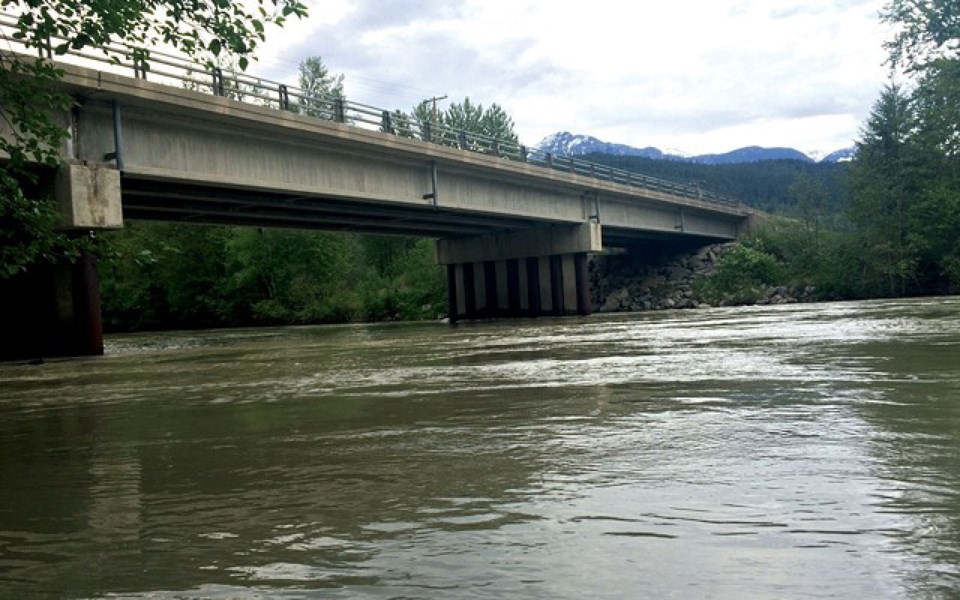The Pemberton Valley Diking District (PVDD) is seeking a contractor to carry out its 2020 Lillooet River sediment removal plans.
The aim is to remove a total of 60,000 cubic metres of sediment from five river bar locations in the Lillooet River: the Voyageur, Beem, Belkin, Big Sky and Airport bars.
"It has to be done in the winter, because it's got to be done in low-water conditions, and the lowest-water conditions we get are [from] February through the first week of April," said Steve Flynn, operations and maintenance manager for the PVDD.
Workers and equipment, he explained, never go into the water, collecting sediment from bars that form on the riverbank.
The PVDD's Lillooet River sediment management plan was updated after an extensive December 2018 flood-plain mapping project, which determined that sediment from the 2010 Mount Meager slide has negatively affected the ability of the Lillooet River to convey flow within the confines of the existing dike system, making it more prone to flooding.
"As a result of the Meager slide in 2010—and the findings of our 2018 flood-plain mapping report project—it's been determined that we need to remove 60,000 cubic metres [annually] out of the lower reach of the river" in order to maintain existing levels of flood protection, said Flynn (see related story on page 46).
This area is the "diked reach" that flows from the confluence of Miller Creek to the confluence of the Green River, he explained.
At this point, the stakeholders have not secured funding for this 2020 project.
"There's a clause in the [request for proposal] that says if the funding is not received, the project could be postponed until such time that funding is received," said Flynn.
Earlier this year, the three affected local governments—the Squamish-Lillooet Regional District (SLRD), the Village of Pemberton (VOP), and the Lil'wat Nation—applied for funding through the Union of BC Municipalities' Community Emergency Preparedness Fund. The local governments have applied for $750,000 each in the fund's flood-mitigation stream. The PVDD has also committed $150,000 to the project should the provincial funding come through.
"Lil'wat Nation applied for a dike upgrade in the Mount Currie area; [the SLRD] applied for sediment removal and monitoring on Mount Currie; and the [VOP] applied for a dike upgrade on the Miller-Lillooet Dike, just north of the Village [and culvert upgrades on the Arn Canal]," said Flynn. "[The Miller Lillooet Dike] is a high-priority area because a dike breach in that area would be catastrophic."
The local governments are working collaboratively on the project, having formed the Pemberton Valley Emergency Management Committee in September, following joint meetings with the flood experts and provincial and federal government officials about increased flood risk.
Flynn said he is hopeful that some cost recovery can be done through the sale of the sediment that is recovered.
"We are looking to find high-value markets for that material that can be used to help offset the removal cost," said Flynn. "It's our goal, to find markets that will offset 100 per cent of the removal costs."
VOP Mayor Mike Richman said the municipality supports the PVDD's efforts.
"We're really trying to be prepared ... and look at the changing geography," said Richman.
Forecasting estimates that it could take 15 or more years for the sediment from the Meager slide to wash through the Lillooet River, he added.
"A lot of [the sediment] is building up in different bars, which is essentially lowering our dikes," he said.
You can read the PVDD's request for proposal here: www.pvdd.ca/assets/pdf/resources/2020-RFP-Final.pdf
Bidding closes at 4:00 p.m. on Jan.15.




